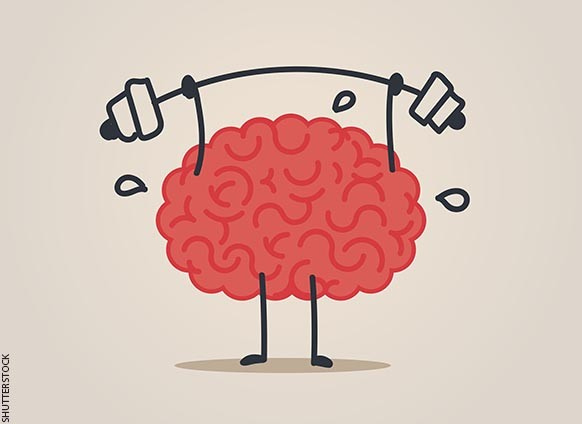From the Gym to Content: the Theory of Cutting the “Oh Well”
“Mental strength isn’t a superpower—it’s hygiene. Like brushing your teeth. Cut the ‘oh wells’ and the micro-alibis and train your brain to choose. The rest—reputation, performance, ‘luck’—shows up as a consequence. And when someone says ‘wow, what a lucky break,’ smile: they know how to count goals, not Tuesday’s training sessions,”
Why I’m writing this (and why this isn’t a fitness piece)
For the last two and a half years, I’ve done intensive workouts: 45 minutes, three times a week. It started as an experiment; now it’s non-negotiable. I won’t sell you rituals, checklists, or “success secrets.” I’m talking about mental strength: the ability to modulate emotions and choose when it would be more comfortable to derail. In business and in everyday life. Many already know this, but it’s worth pausing on one pragmatic detail that helped me—and might help you.
The thesis I’ve validated is simple: fewer “oh wells” = more trajectory.
Reducing micro-alibis (“oh well, tomorrow…”) trains your stress endurance, shifts you from reacting to responding, and improves priority setting. Side effects: less burnout, less random venting, more clarity when it counts. Easy to say—fitness gurus say it all the time—brutally hard to do when your day runs on an abacus and yet another task gets dismissed with an “oh well.” I did it for years. Anything that doesn’t produce immediate, visible effects and isn’t validated by someone—your boss or the board—gets shipped off to the land of “oh well.”
The “oh well” explained to boards (and to bosses who love nautical metaphors)
As responsibilities stack up, we accumulate micro-derogations. Not mortal sins—lateral currents. You drift off course without noticing. The day decisiveness is needed, the muscle isn’t there. The gym—or any real training activity, not social media—reminds your brain you can sit in discomfort and still choose.
From body to business: how the story changes inside organizations
Roles exposed to judgment and criticism (media, marketing, leadership, sales) demand steady nerves and a coherent narrative. Mental strength isn’t shouting in meetings—it’s temperance. It’s re-telling the same idea to different stakeholders without being hijacked by the emotion of the moment. It’s saying “no” when needed—without theatrics. It’s changing course by choice, not out of fatigue. Exercising method and patience—reducing our intolerance to speed and frenzy—means trying to hold a course we set, not one imposed by others.
“Lucky break”? Almost never.
What we call luck is often the dividend of coherent inputs. Cut the “oh wells” for 90 days and suddenly an “opportunity” appears. In reality, you built it: same days, same hour, same effort. No magic—just positive inertia.
And because this theme matters, courses, fluff-gurus, teachers and coaches are multiplying—selling services for something simple to understand but hard to do: remove alibis; start doing what you really don’t feel like doing—the stuff that might disappoint you, scare you, even make you look ridiculous. That’s exactly where the trigger—the spark—of success lives.
Nike in the ’90s said “Just do it.” Today we’ve added the “why,” because meaning matters—and meaning is the real value you bring, without alibis.
Data that don’t shout but move the needle (the famous “order of magnitude”)
A steadier mind. People who exercise report, on average, ~43% fewer days of poor mental health per month than those who don’t. Optimal mental-health gains cluster around ~45 minutes per session, 3–5 times a week. (A well-established magnitude worth using as a compass.)
Habits take weeks, not slogans. Median ~66 days (with wide variability—I took a year) to automatize a new behavior. Translation: consistency beats heroics.
Burnout. Physical activity is associated with a lower risk of emotional exhaustion; the signal is robust across studies (caution on causality, but the direction holds).
Head & performance (sport). Mental toughness correlates moderately with performance; in most studies, “tougher” athletes perform better.
From intent to action. “If-then” plans (implementation intentions) show medium-to-large effects in closing the intention → action gap—in practice, fewer “oh wells.”
When the mind is centered, content bites
A steadier mind trims away the scaffolding (fears, alibis, hyper-control) and lets essence and specificity through. Market-side, that means more trust and more response:
Authenticity → purchase intent. Perceived authenticity (consistency, transparency, craft, ethics) is systematically linked to higher trust and purchase intention.
Un-manicured content → higher conversion. When people engage with content perceived as genuine (real reviews, UGC, credible creators), conversion rates are meaningfully higher than for purely brand-centric content.
A sharper mind shifts content from flat, functional messaging to something specific and identity-driven. And identity drives alignment and buy-in.
Translation: fewer “oh wells” in your head → fewer “oh wells” in your content. And content with fewer “oh wells” is the stuff that moves markets.
Practical effects (no recipes)
Fewer emotional slip-ups → fewer useless vents, more responses, fewer reactions.
Clearer priorities → you choose what not to do—minus the guilt.
Stronger narrative → in complex organizations, perceived coherence counts as much as (sometimes more than) novelty.
Stress that doesn’t curdle into cynicism → do the hard work in the gym, not on your team.
Conclusion
Mental strength isn’t a superpower—it’s hygiene. Like brushing your teeth. Cut the “oh wells” and train your brain to choose. The rest—reputation, performance, “luck”—shows up as a consequence. And when someone says “what a lucky break,” smile: they can count goals, not Tuesday’s training. Just don’t give up all the “oh wells”—maybe save one for your next custard croissant. Don’t tell anyone.
Sources (rough order—handy to keep)
Habits & automatization time: UCL / Lally; 2024 review.
Exercise & days of poor mental health: Lancet Psychiatry, 2018.


